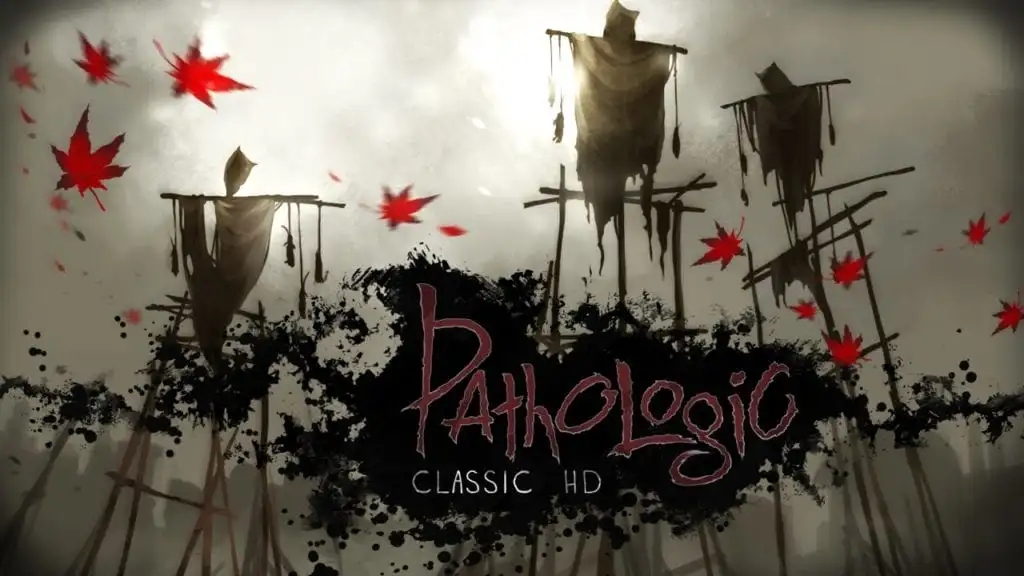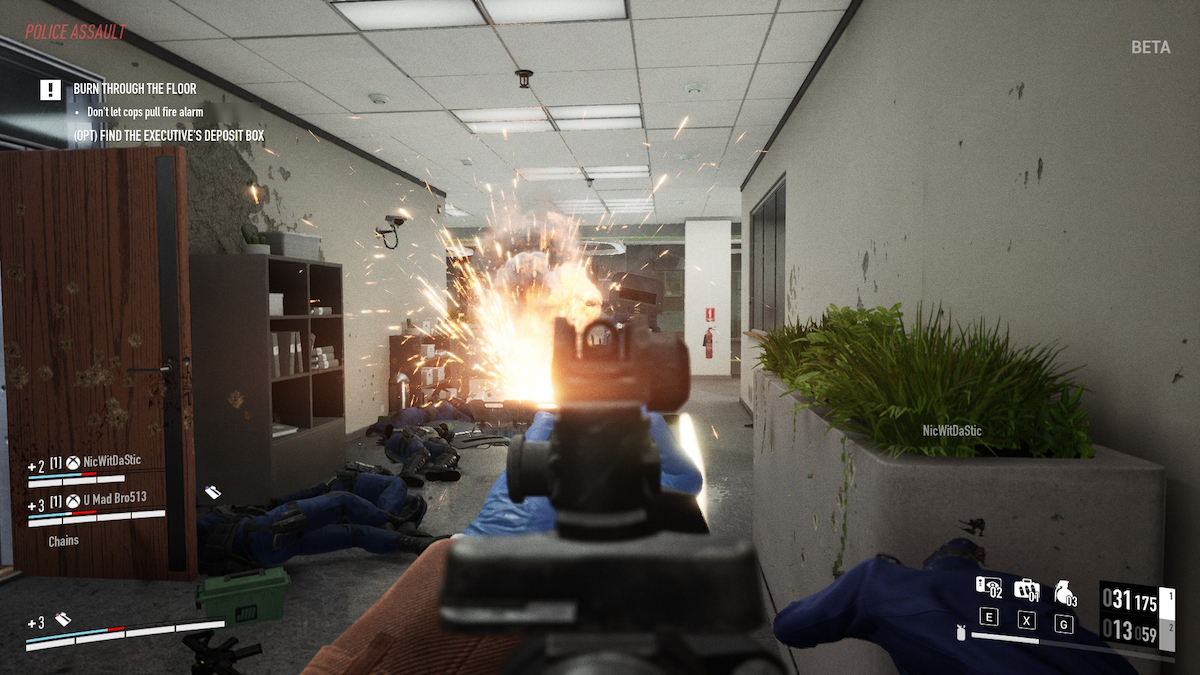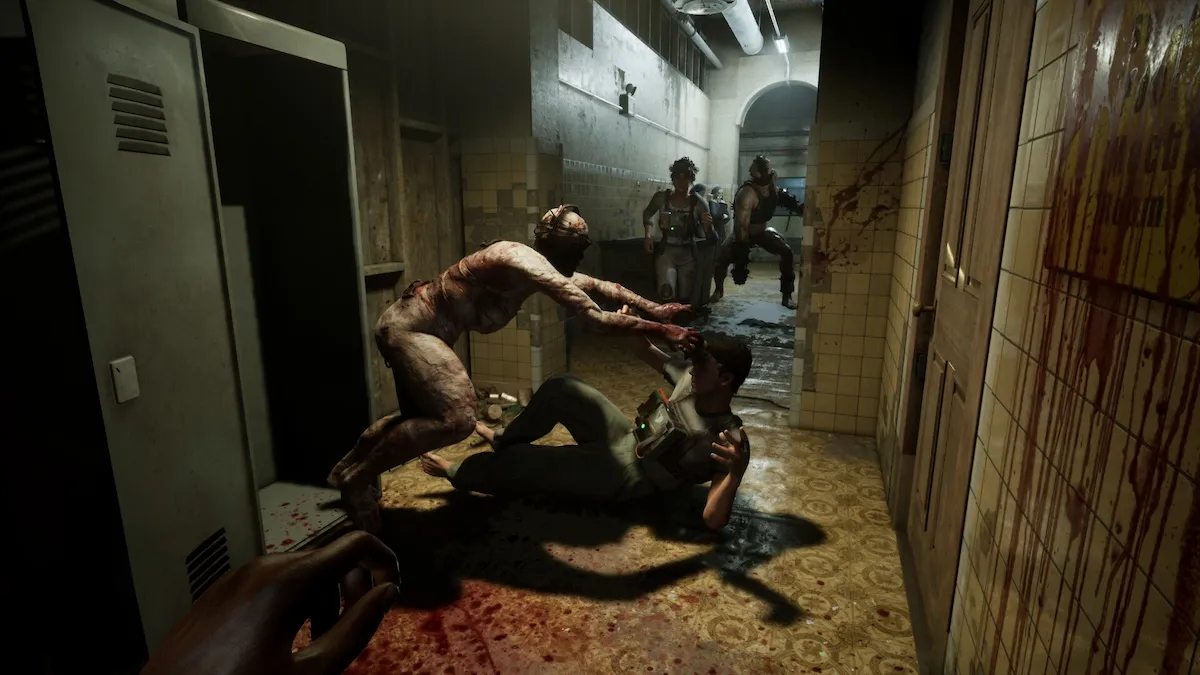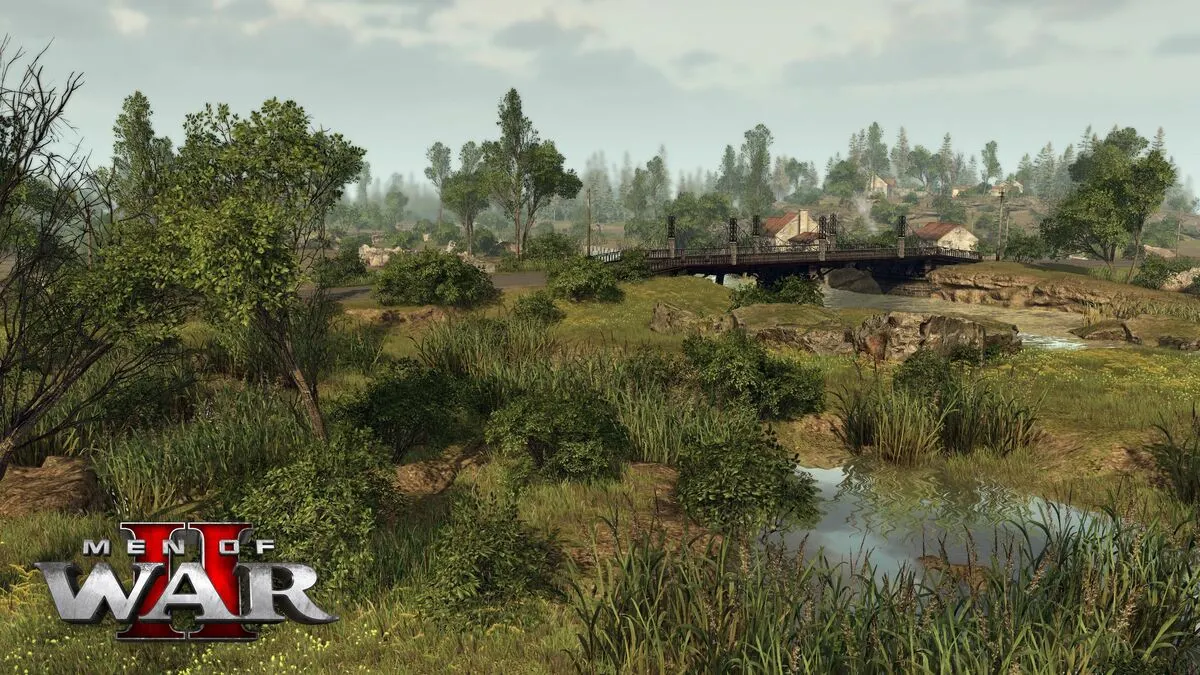In certain secretive gaming circles, Pathologic is a near-mythical game. Originally released in 2006 (and a year earlier in Russia) it’s a grim, bleak, surreal, and unforgiving open-world RPG/survival horror/psychological horror game that forces you to juggle lots and lots of resources – including time itself – to stay alive, let alone to achieve some sort of victory. I mean, it’s an Ice-Pick Lodge game. Cargo! The Quest for Gravity aside, they’re pretty big fans of making everything horrible and traumatic. “You’re in a plague-stricken town where everyone hates you and you have absolutely no resources,” they cheerily proclaim. “Have fun! And try not to catch the plague!”
On the flipside, it’s old, shonky, seems to be held together with sellotape and bits of string, looked dated even at the time, and – most damningly – has a translation so bad that early dubs of kung-fu movies laugh at it (in an unconvincing voice-over that doesn’t match the mouth movements). At best, the translation gave everything a surreal air and lent an alien charm to the proceedings. At worst, it made things unplayable.
Nonetheless, its mechanics, its ambition, and its atmosphere earned it a whole lot of praise from people who could put up with the many, many problems it had. I mean, hell, it won awards in Russia (where it obviously didn’t have translation issues), and it’s been similarly lauded by a few brave souls over here.

Even with the dated textures, it’s an eerily beautiful game that makes the most of its design limitations. The omnipresent fog feels claustrophobic rather than problematic, for instance.
Pathologic was Ice-Pick Lodge’s first game, and they now want to revisit it and do it right. That’s why a remake of it got a successful Kickstarter, and that remake is why Pathologic Classic HD has appeared: the remake is going to end up changing things, so doing an update of the original game to let it run in proper resolutions and to fix the bizarre translation will hopefully keep the die-hard classicists happy. Although if not, they can always just keep playing their original copy of the original game.
Now, I do actually have a copy of the original Pathologic around here, so I figured the best thing for an impressions piece would be to play through the first half hour of the original game, and then play through that section again in Pathologic Classic HD. That way, we can get a direct comparison of the changes. I’ve tried to match screenshots closely so that you can see direct differences, but as with pretty much any game, that’s really quite difficult to do. Still, you should get a pretty good sense for how individual bits and pieces have changed.
As is tradition with our impressions pieces, let’s first have a look at the options and settings. This is what the original Pathologic reckoned I could manage, based on the auto-detect button’s careful examination of my system:
And here’s how I actually ran it, because my computer was not assembled in times when dinosaurs roamed the earth:
Not quite as high as it would go (except for the resolution, which is at its highest), but I didn’t want to fiddle with the settings too much as that tends to make old games look a little weird. I figured this would probably show how it would’ve looked at the time. On the other hand, FRAPS claimed it was running at several thousand FPS, so I reckon I could maybe have pushed it a little higher if I’d wanted.
For comparison, here are Pathologic Classic HD‘s settings:
So that’s 1920×1080, with an FOV slider and options for disabling depth of field, bloom, and motion blur? Christ. If this was a port impressions piece (and I suppose, in a sense, it is) then Pathologic Classic HD would be getting top marks already.
Pathologic opens with you in the balconies of a theatre, overlooking a strange stage play. You can watch for awhile, or head over to the door in the distance to get into the game itself. Here’s the theater in both original and shiny Classic HD-o-vision formats:
So yes, it already looks a bit different. Some of this might be down to the gamma, or it might be down to changes to the way lighting works; either way, I’d argue the newer version gives the backdrop a bit more eerie charm.
Once we head through the door at house right, we’re presented with the character selection screen. I wanted to play as the Devotress/Changeling because the translation for her questline is legendarily bad, to the extent that it’s apparently unplayable in English, but I forgot that she only unlocks after finishing the game with one of the others. Bollocks. We’ll go with the Haruspicus/Haruspex instead:
You can already see differences in the translation. The original is maybe slightly weirder but it’s in a very unnatural way, like something that’s been translated literally rather than by someone with a natural grasp of the language. The voice-overs in the theatre, too, are much better, although you’ll just have to take my word for that. Happily, though, the characters are all still depicted by photos which could’ve come from an actor’s portfolio.
The setting for Pathologic is a small town in the grip of a mysterious plague, and each of the three possible protagonists are there to try to uncover the source of the sickness and halt it. All three storylines run parallel, and all three characters are in town at the same time – you just pick which one you want to play as. This determines the path you’ll follow, the characters you’ll meet, and the secrets you’ll uncover, while hearing about (and encountering) the other two. The game proceeds in real-time, and as the game’s 12 days pass, the sickness worsens, the plague spreads, supplies become scarcer, survival becomes harder, and finding a solution to the problem seems more and more impossible. I mentioned it was bleak, right?
The Haruspex turns up in town via train, having been called back by his dying father to take his place, as the Haruspex is his heir. On arrival, he’s attacked by thugs who believe him to be a murderer, and is left bloody, exhausted, hungry, and hunted. Welcome to Pathologic! Expect to die within 10 minutes of starting.
The cutscenes look like crap, sadly, but that’s not surprising. They were all made using the engine itself, but they’re pre-recorded rather than running in real-time, so it looks like the remake’s only option was to basically re-use the same ones. It was that, or find a way to re-record everything in the engine using the updated graphics, which was probably outside the scope of things. Once we actually start, though, things improve a little:
No major visual changes, but it certainly looks… well, nicer. The lighting is obviously better (which adds a lot to that scene, I think) and the higher resolution offers a wider viewpoint, which makes everything feel less cramped. No huge texture improvements or anything, but again, that’s entirely outside the scope of this HD re-release.
Those plague doctor-looking creatures are Executors, who are one of Pathologic‘s numerous meta-elements. Another part of Pathologic is that the whole thing is also playing out as a… sort of stage play, hence the theatre at the start. With that in mind, I guess you could compare the Executors to… stage hands? They also tend to be harbingers of doom, but in this case, they’re here mostly to provide a bit of a tutorial while being kind of dicks. One explains that you’re low on health and exhausted and hungry, and how you can deal with that; the other explains why your reputation is so low, and how you can deal with that.
There’s actually a mildly interesting difference here. In the original, the “special people” are called Adherents, but the remake seems to refer to them as the Bound. However… they’re still called Adherents in the actual journal menu. This might be an engine thing that couldn’t be changed, or it might be something that’ll be fixed before launch; the version I’m playing has already received a couple of patches.
Okay, let’s finish up with the translation stuff and then talk about the game. So far, none of the translation changes I’ve shown have been particularly extreme. Some lines are a little less opaque, and some just work better in terms of sounding like something a native English speaker might actually say. Those are really more a matter of taste; for the most part I prefer the new translation, but there are a few lines I’ve seen so far where the otherworldliness of the dialogue has been lost, and that’s maybe a mild detriment.
That said, anyone who’s played Pathologic will know that there’s a lot of dialogue that barely makes sense. As I said, I was hoping to try out the Devotress/Changeling path to get into the total linguistic insanity as quickly as possible, but it’s locked away, and getting through the first few days as the Bachelor to get to stuff that I remember as being borderline incomprehensible is something I don’t really have time to do.
So let’s talk about the game. At this point we’re low on health, with sod all in the way of supplies, and the townspeople think we’re a murderer and will attack us on sight. We’ve got a minor lead in terms of the one noble in town who believes we’re innocent and will help us out, and a few others – the criminals, the gangs, the children – will also be relatively friendly to us. Assuming they’re not trying to mug us.
One cutscene of running away from people later, and I’m in a warehouse acting as the fortress of one such child gang. Their leader believes my story that I was attacked because of mistaken identity, but can’t offer any assistance because a traitor has stolen their medicine. But hey, maybe I’d like to go and kill this traitor for them; if I do so, I’ll apparently be rewarded with a revolver. Or I could go and find that noble who apparently believes me. Or I could explore the town and scavenge. I mean, I do still need to find food and bandages, although this would be a good way of getting a weapon. Either way, I jot the sidequest down in my journal, and head on out.
As I’m shit at stealth, I get cornered by a townsperson almost immediately after leaving the warehouse and have to punch the poor bugger to death with my fists, at which point I loot his corpse for money and various vital organs. Yes, vital organs. Which I can sell on to anyone weird enough to be interested in that sort of thing. The Executors mentioned that different people will have different things and will be interested in different things; drunks are more likely to have bandages (because they’re probably going to get into scraps and barfights), and come morning, they’d sell their souls for some valuable water thanks to their hangovers.
Also, on killing that townsperson, my reputation took another hit and the sound of a crying baby played. Thanks, Ice-Pick Lodge.
To cut a long story short, I went and found the traitor, and killed him. Which – again – didn’t do my reputation any favours, what with me punching a child to death, but did earn me a revolver with a scant few bullets.
And here’s the thing: resources are rare. This isn’t a survival horror game where you’re fighting against zombies with a shotgun, and oh no, you’ve run out of shells, so you’ll have to use your crappy pistol for the last two shambling corpses. This is a survival horror game where terrible things are happening, and nobody knows why, and everybody’s scared, and food and water and medicine and weapons and ammunition are running scarce.
As the inventory screenshot when I was talking about the fighting depicts, pretty much everything comes at a cost: eating a lemon, for instance, will increase my immunity to sickness and reduce my exhaustion, but will make me more hungry for substantial food. Morphine helps out with health, but tires me out. Etc. Learning how these mechanics work and how to just survive, day to day, is a mammoth task that is absolutely key to any sort of success in Pathologic.

Combat is rather clunky regardless of whether or not you’re using firearms, but getting good at it will help conserve resources in the long run.
It’s a bleak, bleak game full of difficult decisions, mechanically and morally. Time is absolutely your enemy: you have 12 days to find out what’s happening to the town and to come up with some sort of solution for it, and each day people die, and prices increase, and survivors get more desperate. Not only that, but your time within each day is limited.
Shortly after this, for instance, I learned that the last remaining person who fingered me as a murderer was wounded and dying near the graveyard. If I go there and kill him, well, there’ll be no-one left to finger me as the murderer… but on the other hand, my reputation would likely suffer another hit for committing murder. The girl watching over him asked me to save him by finding a blood donor. Now, maybe this would go some way to proving I was a healer rather than a murderer. It might be the better of the two options. But how much time would it take to cross town to find this donor, and how many resources would I have to expend on the journey? Do I have the energy and health for it? Decisions, decisions. And these aren’t decisions to be taken lightly, either, because Pathologic is brutal and unforgiving.

Although atmospheric, there’s no getting around the fact that some of the graphics look like they could’ve been in Quake 2.
Pathologic isn’t what I’d really call a “fun” game. Honestly, it’s exhausting, mentally and spiritually – and possibly even physically. It depicts a decaying town (which, amazingly, is still incredibly atmospheric despite the dated graphics) which does nothing but decay further during your stay there, gives you an impossible task that seems even more impossible as time goes by, makes you feel like you’re a helpless pawn in some metaphysical stage play, and then forces you to carefully manage your resources in order to just survive. Getting to the end of a day while successfully completing that day’s main quests feels like a triumph, or at least a pyrrhic victory; you might not have solved the problems, but you’re one step closer! And you feel good. And then the next day starts up with the game somberly telling you how far the plague has spread, how many more people have died, and – basically – how fucked you are.
But man, it’s one hell of an experience. There really isn’t much else like it, and it’s rightly acclaimed as something special. That said, there’s absolutely no shame in the fact that it might not be for you. I’ve never finished the original. In fact, I didn’t even make it particularly far. Some of that was down to the translation and some of it down to the clunkiness (and, honestly, some of it down to the fact that it’s such a heavy and doleful game), but I reckon I’d have a better shot with this, and – hopefully – an even better chance with the full remake.

The plague doctor-like Executors are creepy at the best of times, not least because they seem to know far more about what’s going on than they’re letting on.
What I’ve played of Pathologic Classic HD – which really is only around an hour – makes me pretty optimistic about the state of the full thing. The game “feels” better, in that indefinable way that means it controls and handles a lot more comfortably, and the addition of higher resolutions and some graphical tweaks were badly needed. The new translation, too, largely comes across as an improvement, and the voice acting isn’t as off-putting. There are doubtless those who’ll prefer the surreal weirdness of the original text, but for the sake of sheer comprehensibility, I think I’d consider the new translation a benefit. That’s assuming that it really has been properly translated, of course – what’s on show at the start certainly makes it seem that way, but without having made it to the later bits where it really started to fall apart, it’s hard to say for sure.
For a launch price of £7.49, I’d say Pathologic Classic HD is worth considering. Pathologic isn’t the friendliest of games, but it’s quite unlike anything else I’ve ever played, and for now this looks like the best way of experiencing it for yourself.



























Published: Oct 29, 2015 03:58 am